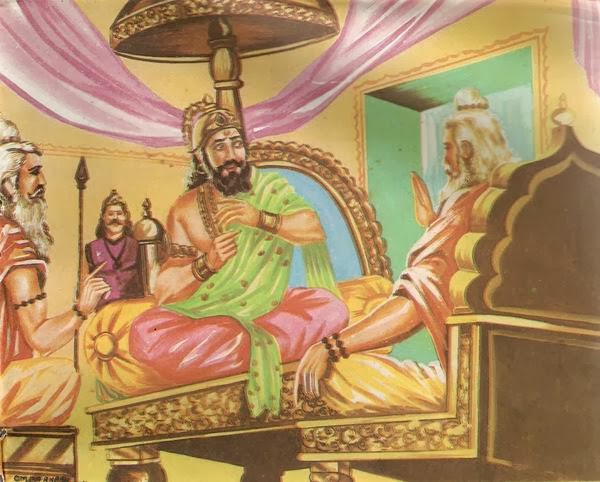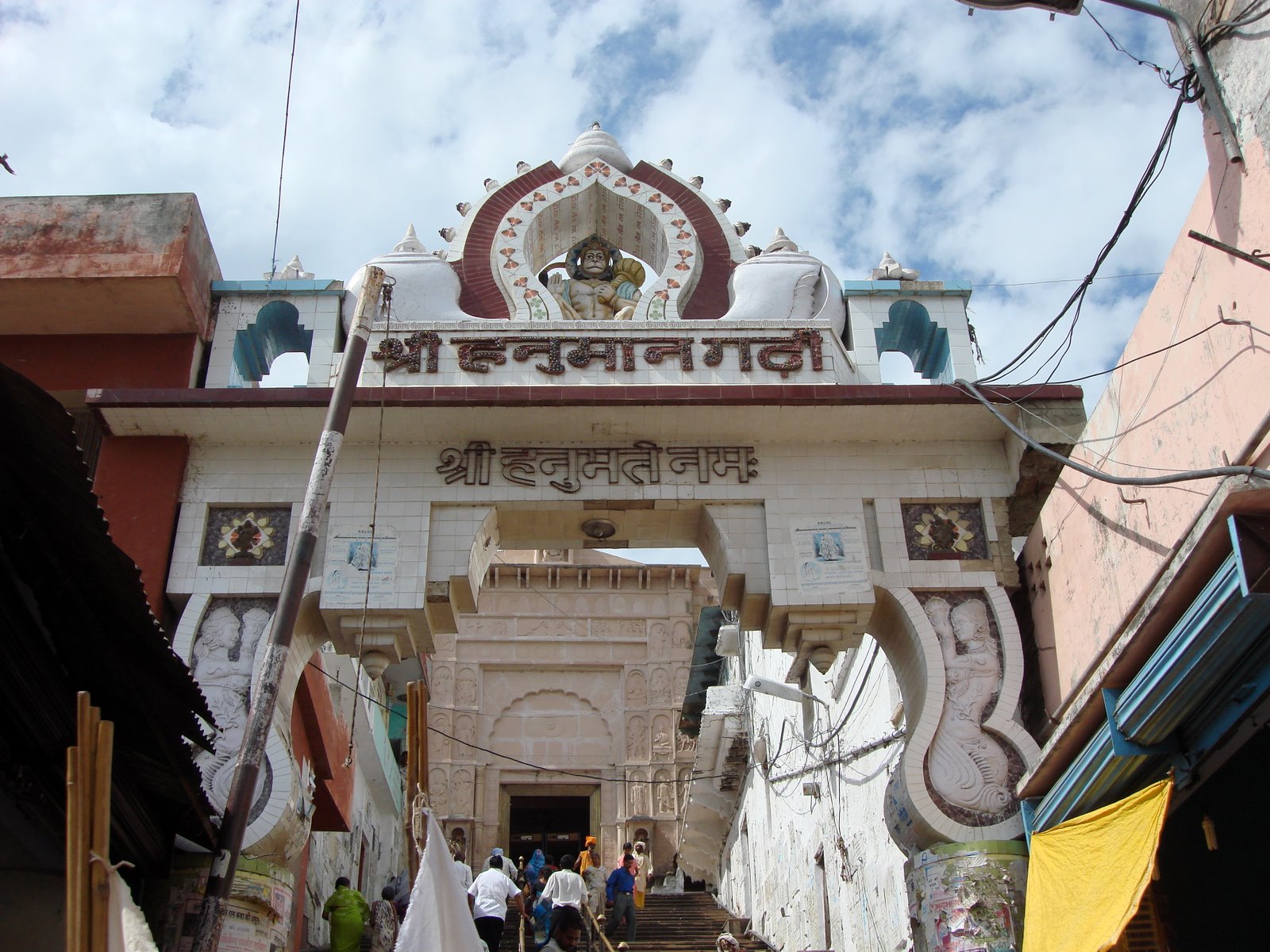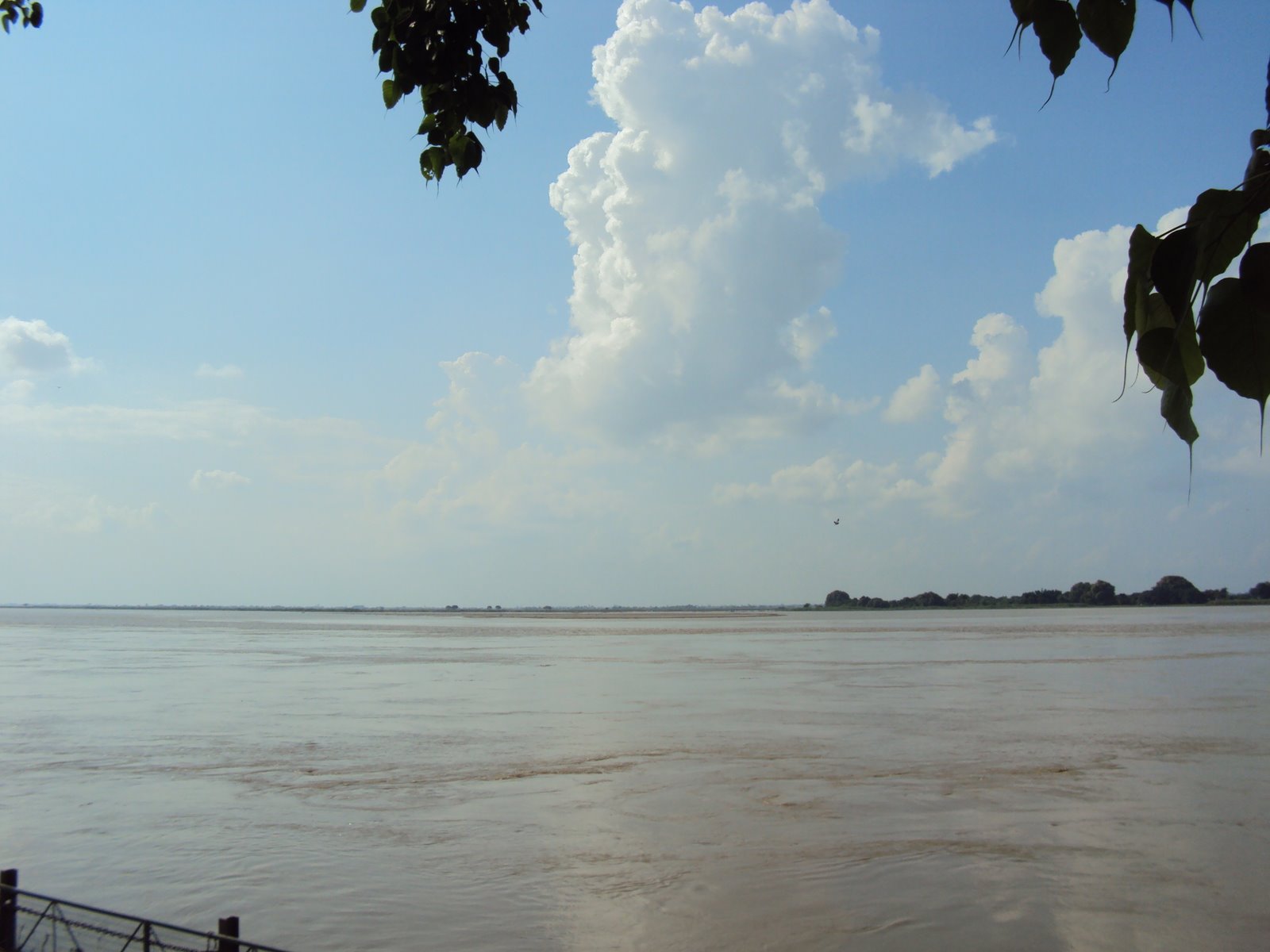
We saw many places in Mukthi Kshetram Ayodhya. Perumal is incomplete without Mahalakshmi. We all get blessed only when She is next to Him. Lord Rama attains age of twelve years, Maharaja Dasaratha thinks of His marriage. But even before Dasaratha decided, looks like all the Deva's and Rishi's discussed and decided to tie the knot with Sita Mata. As seen in earlier articles, birth of Lord Rama and period of 12 years was spent in Gurukula (type of school) vasa at Guru Vasishta's hermitage. (Discussed in Bala Kandam Sargam 18 of Valmiki Ramayana). After His education, Dasaratha is in a view to offer Him Maharaja status, to take care of the kingdom.
Sita Kalyanam is going take place. Not now, but after 15 days - Ram and Lakshmanan along with Viswamitra reach Mithilapuri (this place located in Nepal today) after a long journey for period of 15 days. This is the first journey of Lord Rama. They stayed in many places in the course of journey, we have many stories connected to it. We are going to see all these in upcoming articles.
Sage Vishwamitra arrives at Dasaratha's palace during the matrimonial discussion and the King welcomes the sage and expresses his happiness as same as when rains come in a droughty area.
Dasaratha presumed that Viswamitra will never visit Ayodhya or his palace and without any provocation promises to give whatever Viswamitra asks. Catching this point Viswamitra asks Dasaratha to depute Sri Rama with him to protect the yagna he is doing. Dasaratha is shocked and declines saying that Sri Rama had not completed even 16 years and so He may not be able to help him but Dasaratha offered himself to accompany the sage to protect the yagna. Viswamitra says that with his penance [tapas] he himself can destroy Thataka and other demons but since he was doing yagnam he could not divert his attention to anger etc and further said that Sri Rama could fill this task and other tasks kept waiting for Him.
Sage Viswamitra replies : "aham vedmi mahatmanam ramam satya-parakramam"
Meaning: He described Sri Rama as a hero possessing true prowess though still a small boy. He says he knows the high-souled Sri Rama as possessed of true unfailing prowess.
Dasaratha out of extreme love for Sri Rama refuses and so Viswamitra gets angry and starts leaving the palace in a huff (bad mood).
Noting that Viswamitra is seeking Sri Rama to perform more noble deeds like His marriage with Sri Sita, Vasishta immediately intervenes and advises the King to stop Viswamitra from leaving and hand over Sri Rama as requested.
Dasaratha listened to his guru, and asked Rama to go with Vishwamitra. Lakshmana also went with Rama and Vishwamitra. They left Ayodhya and started to walk towards Vishwamitra’s ashram in the forest along the southern banks of River Sarayu.
Let us also follow them, hence we are leaving Ayodhya. Let us do a quick recap of the places we saw in ayodhya and then start from Ayodhya.












Hope all will have the darshan of Ayodhya one day with the blessings of Lord Rama. Now we are leaving Ayodhya with downhearted and moving to our next destination - Kama Ashram.
We are going to see a map of the travel to Kama Ashram. From Ayodhya we need to follow the southern bank of river Sarayu. Thanda, ajangar, Ghazipur. From Ghazipur if you take east we can go to Buxar which is in Bihar. Now we are going to UP/Bihar border, Baliya district, Ghazipur. Kama Ashram is between Ghazipur and Buxar. Hence can be reached either from Ghazipur or from Buxar. As per Valmiki Ramayanam Gangai, Sarayu sangamam has happened at baliya maganam near Kama Ashram but we do not see that today and it happens in a place called Chapra. This is probably due to many changes through all these ages. We have reached Kama Ashram, beautiful pond and after a holy dip in the pond we shall proceed further.
Sita Kalyanam is going take place. Not now, but after 15 days - Ram and Lakshmanan along with Viswamitra reach Mithilapuri (this place located in Nepal today) after a long journey for period of 15 days. This is the first journey of Lord Rama. They stayed in many places in the course of journey, we have many stories connected to it. We are going to see all these in upcoming articles.
Sage Vishwamitra arrives at Dasaratha's palace during the matrimonial discussion and the King welcomes the sage and expresses his happiness as same as when rains come in a droughty area.
tasya cimtayamaanasya mamtri madhye mahaatmanah
abhyaagacchat mahaatejaa vishvaamitro mahaamunih
Dasaratha presumed that Viswamitra will never visit Ayodhya or his palace and without any provocation promises to give whatever Viswamitra asks. Catching this point Viswamitra asks Dasaratha to depute Sri Rama with him to protect the yagna he is doing. Dasaratha is shocked and declines saying that Sri Rama had not completed even 16 years and so He may not be able to help him but Dasaratha offered himself to accompany the sage to protect the yagna. Viswamitra says that with his penance [tapas] he himself can destroy Thataka and other demons but since he was doing yagnam he could not divert his attention to anger etc and further said that Sri Rama could fill this task and other tasks kept waiting for Him.
uuna shodasha varsho me raamo raajiiva lochanah
na yuddha yogyataam asya pashyaami saha raaxasaih
Sage Viswamitra replies : "aham vedmi mahatmanam ramam satya-parakramam"
Meaning: He described Sri Rama as a hero possessing true prowess though still a small boy. He says he knows the high-souled Sri Rama as possessed of true unfailing prowess.
Dasaratha out of extreme love for Sri Rama refuses and so Viswamitra gets angry and starts leaving the palace in a huff (bad mood).
yad idam te kshamam raajan gamishyaami yathaa aagatam
mithyaa pratijnah kaakutstha sukhii bhava sabhagavah
Noting that Viswamitra is seeking Sri Rama to perform more noble deeds like His marriage with Sri Sita, Vasishta immediately intervenes and advises the King to stop Viswamitra from leaving and hand over Sri Rama as requested.
kritah svastyayanam maatraa pitraa dasharathena ca
purodhasaa vasishthena mangalaih abhimamtritam
sa putram muurdhni upaaghraaya raajaa dasharathah tadaa |
dadau kushika putraaya supriitena antaraatmanaa
Dasaratha listened to his guru, and asked Rama to go with Vishwamitra. Lakshmana also went with Rama and Vishwamitra. They left Ayodhya and started to walk towards Vishwamitra’s ashram in the forest along the southern banks of River Sarayu.
Let us also follow them, hence we are leaving Ayodhya. Let us do a quick recap of the places we saw in ayodhya and then start from Ayodhya.
Sarayu River:
Ayodhya darshan starts only after taking holy dip in Sarayu river, without holy dip it is meant incomplete. Sarayu was born from the heart of Lord Brahma. Ayodhya is located on the bank of the river Sarayu, is also the river upon whose banks King Rama was born. Ayodhya, capital of King Rama is mentioned on the banks of Sarayu river. Sarayu river is mentioned in great details in the epic Ramayana.
Ram Janma Bhoomi:
The other important place in Ayodhya is Ram Janma Bhoomi which is famously known as "Ram Lalla". Ram lalla (Ram as an infant / Ram lalla virajman / Ram lalla birajman) is the incarnation of Hindu God Vishnu's avatar Rama as an infant (lalla), the presiding deity at the temple of Janam bhoomi (Birthplace Temple) at Ayodhya, India.Dasharatha Bhavan:
Lord Rama chose King Dasaratha & Kousalya Devi as his parents. We can have the darshan of beautiful idols in this Bhavan.
Vasistha Kund:
Sage Rishi Sringar performed Putrakameshti Yajna under the guidance of Guru Vasistha for seeking child boon to King Dasaratha. This Yagna Stalam can be seen in Vasistha Kund.
Makauda Ghat:
We can find one more Yagna shala (place for sacrificial fire ceremonies) 20 Kms from Ayodhya known as Makauda Ghat. Located on the banks of river Sarayu. Putrakameshti yagna was performed here, at the close of the yagna. There emerged a greatly vigorous and energetic Divine Being with an unparalleled resplendence, called Yagna Purusa in the homa/yagna with a golden pot/bowl consisting of payasam or kheer (divine pudding).
Kanaka Bhavan:
Kanak means gold in hindi, so the "house of gold" takes it's name from the gold decorated statue of Ram and Sita in the main altar. We can see the imprints of the Divine feet of Lord Sri Rama here.
Raj Darbar:
After marriage Lord Rama and Sita had come to this place and in this Mata Sita served food to all her in-laws.Hanuman Garhi/Gaddi:
Lord Hanuman is said to be here only, he didn't leave Ayodhya along with Rama to Vaikuntam.Valmiki Bhavan:
All 24000 slokas of epic Ramayana are inscribed on the four walls of the bhavan with pictures of the most important incidents of each kandam on the top. We can have the darshan of Sage Valmiki with his grandson's lava and Kusha. Another feature is that from Himalayas to Kanyakumari, many people write 'Ram', 'Sri Rama', 'Sri Sitaram', 'Sri Jayaram', 'Sri Ramajayam', etc., and all those books and notebooks are collected here.Ammaji Mandir:
It's a South Indian style temple in Ayodhya, which is managed by the Saraswathi Bhandaram Trust.
Lakshman Ghat:
Lakshman wanted to welcome Rama in Vaikuntam and didn't want to stay in this earth without Rama so he went to Vaikuntam before Rama from Lakshman Ghat.Guptar Ghat:
It was from here that Lord Sri Rama ruled the earth for 11000 years and left for Vaikuntam from here. It is also known as Gopratar Theertham.
Hope all will have the darshan of Ayodhya one day with the blessings of Lord Rama. Now we are leaving Ayodhya with downhearted and moving to our next destination - Kama Ashram.
We are going to see a map of the travel to Kama Ashram. From Ayodhya we need to follow the southern bank of river Sarayu. Thanda, ajangar, Ghazipur. From Ghazipur if you take east we can go to Buxar which is in Bihar. Now we are going to UP/Bihar border, Baliya district, Ghazipur. Kama Ashram is between Ghazipur and Buxar. Hence can be reached either from Ghazipur or from Buxar. As per Valmiki Ramayanam Gangai, Sarayu sangamam has happened at baliya maganam near Kama Ashram but we do not see that today and it happens in a place called Chapra. This is probably due to many changes through all these ages. We have reached Kama Ashram, beautiful pond and after a holy dip in the pond we shall proceed further.


0 comments:
Post a Comment